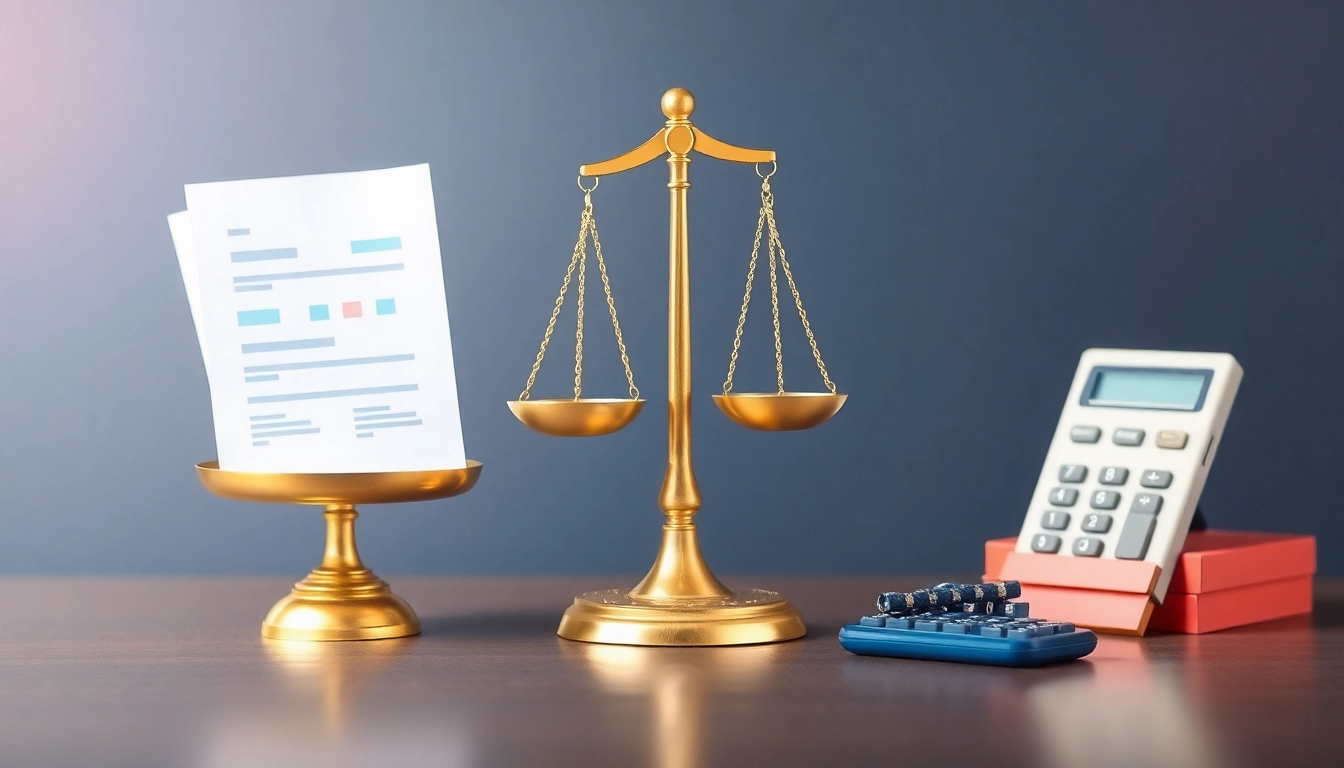Understanding Account Reconciliation
What is Account Reconciliation?
Account reconciliation is the process of comparing two sets of records to ensure that figures are accurate and consistent. This practice typically involves checking the balances in accounting ledgers against bank statements or other financial documents. By reconciling accounts, businesses ensure the integrity of their financial data, which is critical not just for accurate reporting but also for maintaining stakeholder trust. The reconciliation process helps identify discrepancies that could stem from transaction errors, fraud, or timing differences in postings. In essence, account reconciliation is pivotal for ensuring that every transaction is accounted for in a company’s financial statements.
The Importance of Account Reconciliation
The significance of account reconciliation in financial management cannot be overstated. First and foremost, it enhances the accuracy and reliability of reported financial information, which is crucial for decision-making. Without proper reconciliation, organizations might publish erroneous data, which can lead to poor financial decisions and potentially severe legal repercussions. Furthermore, reconciliation helps detect fraud by identifying transactions that don’t match expected patterns, thus serving as an internal control mechanism.
Moreover, regular reconciliation can support better cash flow management. By keeping tabs on outstanding invoices and payments, businesses can forecast cash requirements more effectively. Finally, thorough reconciliation leads to improved communication between finance teams and auditors, simplifying the audit process and enabling organizations to maintain compliance with regulatory standards.
Common Challenges in Account Reconciliation
Despite its importance, account reconciliation poses several challenges. One of the most prevalent issues is the sheer volume of transactions that organizations deal with, making it easy to overlook discrepancies. Additionally, errors due to data entry or timing differences often complicate the reconciliation process. Even small inconsistencies can create larger issues if not addressed promptly.
Another challenge is the reliance on manual processes, which can be time-consuming and prone to human error. Organizations that fail to leverage modern technology may find their reconciliation processes inefficient, leading to delays in reporting. Finally, communication issues can also hinder reconciliation; if information is not shared timely across departments, resolving discrepancies can become an arduous task.
Step-by-Step Guide to Account Reconciliation
Preparation for Reconciliation
The preparation phase of account reconciliation is crucial for ensuring a smooth and effective process. Start by gathering all relevant documents, including bank statements, invoices, receipts, and previous reconciliation statements. Ensure that you have a clear understanding of the time period for reconciliation and that all transactions during this period are documented.
It is also beneficial to establish a checklist that includes specific tasks such as identifying the accounts to reconcile, setting a timeline for completion, and delegating roles within your team. Thorough preparation sets the stage for identifying inconsistencies easily and efficiently.
Executing the Reconciliation Process
During the execution phase, begin by comparing each transaction on the financial record against the corresponding entries in the bank statement or another relevant financial document. Highlight any mismatches and investigate the root causes. Are there duplicates? Are there transactions recorded in the wrong period? Documenting these discrepancies is crucial for future reference.
Additionally, utilize variance analysis where necessary to understand why differences exist. This method entails breaking down the accounts to pinpoint specific areas that need attention. Efficient execution not only catches discrepancies but also provides clarity into the financial health of the organization.
Finalizing and Documenting Reconciliation
Once all discrepancies have been addressed, it is time to finalize the reconciliation. Prepare a reconciliation statement that summarizes all findings and adjustments needed to correct the records accurately. This statement serves as a vital document for both internal and external stakeholders.
Furthermore, documenting the reconciliation process is essential. Keep a record of all reconciled accounts alongside any supporting documents for future reference. These records will be crucial during audits and can provide insights into recurring issues that need to be addressed. Proper documentation also ensures that any future reconciliation efforts are grounded in accurate historical data.
Tools and Software for Effective Account Reconciliation
Choosing the Right Tools for Your Needs
Selecting the proper tools for account reconciliation is critical for enhancing efficiency and accuracy. Key factors to consider include the volume of transactions, the complexity of financial structures, and the specific features you require from the software. For businesses with a large number of transactions, automation tools that facilitate bulk reconciliations can save significant time. For smaller businesses, a robust spreadsheet tool may suffice.
Integration capabilities are also essential; the chosen tools should integrate seamlessly with your existing financial systems to avoid double data entry and minimize the risk of errors. Choose products that offer flexibility and scalability, allowing your tools to grow alongside your organization.
Top Software Solutions for Account Reconciliation
There are numerous software solutions available that can simplify the account reconciliation process. Tools such as Xero, QuickBooks, and NetSuite are designed for businesses of varying sizes and needs. Focused reconciliation tools like ReconArt or BlackLine offer more advanced features, such as automatic matching and a customizable dashboard for real-time oversight.
When evaluating these tools, consider demos or free trials to assess usability and functionality. Talk to others in your industry for recommendations and reviews to ensure the effectiveness of the software meets your specific accounting requirements.
Integrating Technology into Reconciliation Processes
Integrating technology into your reconciliation process can greatly enhance efficiency, reduce the risk of human error, and enable faster completion. Workflow automation tools can help streamline data entry and facilitate real-time processing of financial data, thus minimizing the time spent on manual tasks.
Moreover, advanced analytics can provide insights into transaction trends, helping teams prioritize areas that require immediate focus. Finally, employing cloud-based solutions ensures that all stakeholders have access to real-time data, fostering collaboration and improving the overall quality of the reconciliation process.
Best Practices for Streamlined Account Reconciliation
Developing a Regular Reconciliation Schedule
Creating a regular reconciliation schedule is fundamental to maintaining organized financial records. Establishing a timetable—whether daily, weekly, or monthly—depends largely on the volume of transactions and the financial policies of your organization. Regular reconciliations prevent backlog issues and ensure that discrepancies are caught and addressed in a timely manner, thereby safeguarding the accuracy of financial statements.
Additionally, develop internal deadlines for team members involved in the reconciliation process to enhance accountability. Deadlines paired with routine can lead to a culture of discipline around financial management, which is essential for any successful organization.
Checklists for Efficient Account Reconciliation
Using checklists can significantly enhance the account reconciliation process. Create a comprehensive reconciliation checklist that includes tasks such as gathering required documentation, confirming transaction records, performing variance analyses, and documenting findings. Checklists help ensure that no steps are overlooked and promote consistency across reconciliation activities.
Using these tools not only increases efficiency but also educates staff on best practices regarding account reconciliation, which is vital for maintaining high standards within the finance team.
Training Staff on Reconciliation Protocols
Investing in staff training is crucial for effective account reconciliation. Employees should be well-versed in both the technical aspects and the strategic importance of reconciliation. Providing regular training sessions that cover reconciliation protocols, how to use chosen software, and common reconciliation challenges can improve overall performance.
Moreover, establish a mentorship program where experienced staff can guide new employees. Continuous learning is essential in the fast-paced world of finance, and keeping your team informed about best practices and emerging technologies can significantly enhance the reconciliation process.
Measuring Success in Account Reconciliation
Key Performance Indicators (KPIs) for Reconciliation
To measure the success of the reconciliation process, organizations should establish Key Performance Indicators (KPIs) tailored to their specific goals and challenges. Common KPIs include the time taken to complete reconciliations, the frequency of discrepancies identified, and the percentage of reconciled transactions resolved within a specified timeframe.
Tracking these metrics can provide insights into the effectiveness of current processes and highlight areas for improvement. For instance, if discrepancies are consistently high, it may indicate a need for better training, more robust processes, or improved technology.
Continuous Improvement in Reconciliation Processes
Continuous improvement is essential for optimizing reconciliation processes. Employ techniques such as regular feedback sessions with staff to discuss challenges and successes. Implement a system for documenting lessons learned and best practices to ensure that knowledge is retained within the organization.
Additionally, conduct periodic reviews of the reconciliation process to identify bottlenecks and streamline workflows. By fostering a culture of continuous improvement, organizations can adapt to changing circumstances and refine their reconciliation efforts over time.
Analyzing and Adjusting Reconciliation Strategies
Lastly, organizations should regularly analyze their reconciliation strategies. Assess the effectiveness of current tools and practices by reviewing performance data in line with the established KPIs. If certain strategies yield limited results, don’t hesitate to adjust approaches, whether that includes exploring new technologies, redesigning processes, or reallocating team resources. Regularly reevaluating initiatives ensures that reconciliation practices evolve with the organization itself.




